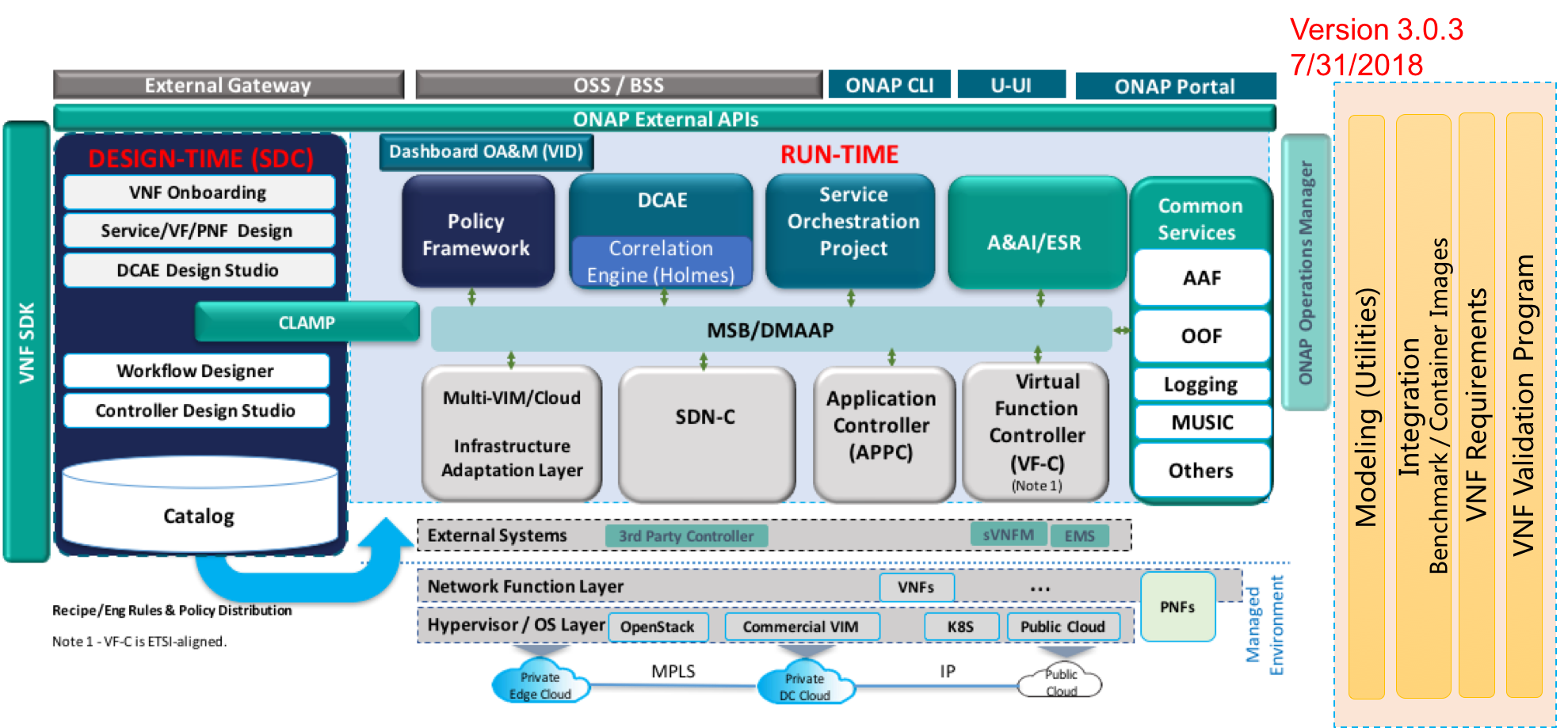...
Jira Legacy server System Jira columns key,summary,type,created,updated,due,assignee,reporter,priority,status,resolution maximumIssues 20 jqlQuery project = OPTFRA AND issuetype = Story AND fixVersion = "Dublin Release" order BY priority DESC, updated DESC serverId 4733707d-2057-3a0f-ae5e-4fd8aff50176
Longer term roadmap
Indicate at a high level the longer term roadmap. This is to put things into the big perspectiveAs the ONAP platform matures and new capabilities are introduced over time, the need for platform optimization services will grow along with it. The ONAP Optimization Framework is envisioned to handle this need as effectively as possible, by enabling creation of new optimization services with minimal or little new code development. The goal of OOF is to provide a growing set of core platform optimization services such as VNF placement and resource allocation (OOF-HAS), change management scheduling (OOF-CMSO), etc.
Vision for OSDF:
OOF-OSDF is envisioned to be a collection of design time optimization libraries along with reusable runtime tools and microservices to facilitate and simplify the creation of new specific runtime optimization functionalities. The goal of OSDF is to avoid siloed optimization tools and associated duplicated efforts and overheads. For instance, the Homing Service, HAS (which was provided in the Beijing release) will not only contribute its reusable components to the framework, but also leverages the framework in its own feature development. Other potential optimization services that can be built using this framework include energy optimization in networks, optimal route selection for various network services, and radio access network (RAN) performance optimization.
Vision for HAS:
OOF-HAS, or the Homing Service is a distributed resource broker that enables automated policy-driven optimized placement of services on a global heterogeneous platform using ONAP. HAS is architected as an extensible homing service that can accommodate a growing set of homing objectives, policy constraints, data sources and placement algorithms. It is service-agnostic by design and can easily onboard new services with minimal effort. HAS is designed to be used as a building block for both initial deployment, as well as runtime redeployment due to failures or runtime-capacity increase (scale-out). While the initial deliverable of HAS is to provide optimized homing/placement of services during the service instantiation workflows in ONAP, HAS naturally extends to a general policy-driven optimizing placement platform for all platform placement functions, including placements of VMs, containers (e.g., for DCAE micro-services), ONAP Control Loops or VNF specific resources. HAS will also eventually allow placements of additional resource types such as licenses, VNF resources, etc.
Release Deliverables
Indicate the outcome (Executable, Source Code, Library, API description, Tool, Documentation, Release Note...) of this release.
| Deliverable Name | Deliverable Description | To fill out | To fill out|
|---|---|---|---|
| OOF-HAS | Executable, and source code for the Homing Service for the ONAP platform | ||
| OOF-OSDF | Executable and source code that provides optimization design framework support to optimizers like HAS | ||
| OOF-CMSO | Executable, and source code for the Change Management Schedule Optimizer |
Sub-Components
List all sub-components part of this release.
Activities related to sub-components must be in sync with the overall release.
...
- OOF-HAS - Homing Service that can be provides optimized placement based on policy constraints, across multiple clouds and multiple sites.
- OOF-OSDF - Optimization Design framework that helps create new types of policy- and model-driven optimizers.
- OOF-CMSO - Change Management Schedule Optimizer
Architecture
High level architecture diagram
At that stage within the Release, the team is expected to provide more Architecture details describing how the functional modules are interacting.
Indicate where your project fit within the ONAP Archiecture diagram.
Block and sequence diagrams showing relation within the project as well as relation with external components are expected.
Anyone reading this section should have a good understanding of all the interacting modules.
Platform Maturity
...
